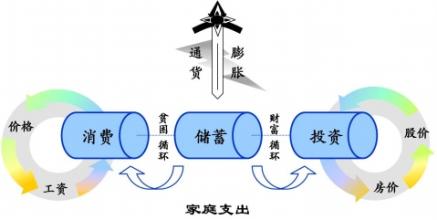系列专题:《美国经济灾难的前因后果:美国大萧条》
参见"The Federal Home Loan Bank", p.326;亦参见Donald Shelby, "Some Implications of the Growth of Financial Intermediaries," Journal of Finance(December, 1958):527-541。
[11]人们可能会绝望地问:如果按设想,"储蓄"机构(储蓄银行、人寿保险公司、储蓄和贷款协会等等)必须服从100%的准备金规定,那么一个自由至上的社会会允许怎样的储蓄呢?回答是:真正的储蓄,比如一个投资机构发行的股份、债券的出售、其他债券或者对储蓄者的期限票据,这些会在将来某个日子下跌。这些真正的储蓄基金将被投资到商业企业中。 [12]Banking and Monetary Statistics, pp.370-371. 1929年列出的超额部分平均大约为0.4亿美元,为准备金余额总数的大约2%。 [13]Banking and Monetary Statistics, pp.34, 75.存款总量为"调整后的活期存款"加上美国政府存款。存款由成员银行向非成员银行转移,这会导致有效准备金规定的降低,同时增加了超额准备金和货币供给,因为非成员银行使用成员银行存款作为它们的准备金基础。参见Lauchlin Currie, The supply and Control of Money in the United States(2nd ed., Cambridge, Mass.: Harvard University Press, 1935), p.74。
[14]关于20年代的定期存款,参见Benjamin M.Anderson, Economics and the Public Welfare(New York: D.Van Nostrand, 1949), pp.128-131; C.A.Phillips, T.F.McManus, and R.W.Nelson, Banking and the Business Cycle(New York: Macmillan, 1937), pp.98-101。 [15]联储信贷这一为人熟知的类别,它包括购买的联储资产和贴现票据。 [16]至于皮特曼法案(Pittman Act),参见Edwin W.Kemmerer, The ABC of the Federal Reserve System(9th ed., Princeton University Press, 1932), pp.258-262。 [17]H.Parker Willis, "Conclusions," in H.Parker Willis, et al., "Report of an Inquiry into Contemporary Banking in the United States"(typewritten ms., New York, 1925), vol.7, pp.16-18. [18]参见Seymour E.Harris, Twenty Years of Federal Reserve Policy(Cambridge, Mass.: Harvard University Press, 1933), vol.1, pp.3-10, 39-48。 [19]上引书,第108页及以下诸页。 [20]Federal Reserve, Annual Report, 1923, p.10;引用自同书,第109页。 [21]参见Phillips, et al., Banking and the Business Cycle, pp.93-94。 [22]Harris, Twenty Years, p.91. [23]Oliver M.W.Sprague, "Immediate Advance in the Discount Rate Unlikely," The Annalist(1926):493. [24]参见H.Parker Willis, "Politics and the Federal Reserve System," Banker?s Magazine(January, 1925):13-20;同上,"Will the Racing Stock Market Became A Juggernaut?" The Annalist(November 24, 1924):541-542; The Annalist(November 24, 1924):477。 [25]1921年前是战争金融公司的鼎盛时期,当时国会扩大了授予该公司的贷款权力,并将之重组,使之可以向农业合作社提供资本贷款。此外,联邦土地银行系统在1916年建立以向农业协会提供抵押贷款,借贷重新开始,更多的国库资本基金被授权使用。最后,国会中的农业集团通过了1923年农业信贷法案,以此法案建立了12个政府性质的联邦中期信用银行,它们可以向农业协会提供贷款。参见Theodore Saloutos and John D.Hicks, Agriculture Discontent in the Middle West, 1900-1939(Madison: University of Wisconsin Press, 1951), pp.324-340。
 爱华网
爱华网



